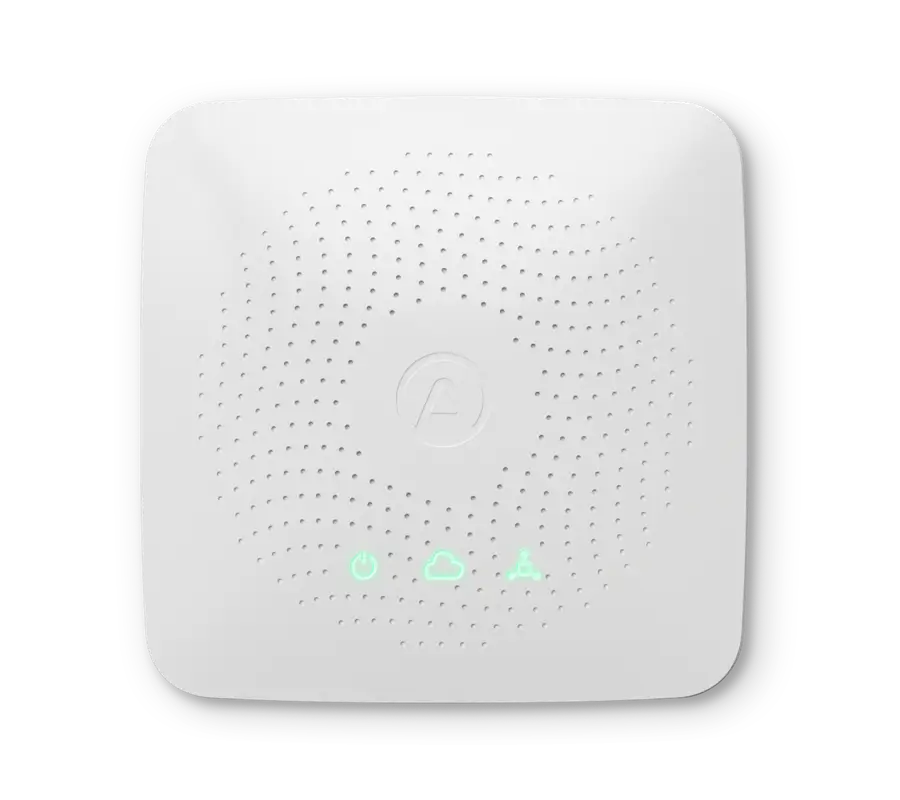Humidity in our homes is something we all try to avoid. It causes mold, moisture, creates condensation on our windows and is unanimously undesirable. However, humidity is not only a nuisance that we find unpleasant. As Harvard’s Annual Review of Public Health recently announced, there is over forty years of overwhelming evidence to suggest that human health is influenced by the buildings we all live and work in. By monitoring our indoor air quality, we can avoid any adverse effects that stem from humidity. Not only can high humidity levels influence our homes and health, but overly low humidity levels are now known to help the spread of infection. It is estimated that globally 10 to 20%1 of homes are affected by some measure of dampness, so we at Airthings have compiled expert advice for everything you want to know about the humidity in your home.
.png)
What causes humidity indoors?
In layman’s terms, humidity refers to the amount of water vapor present in the air. A relative humidity of 100% would mean that the air itself is saturated, it is unable to hold any more water vapor, so it rains. Relative humidity is the most common indicator often used by weather forecasters and our experts at Airthings. The calculation of relative humidity can consider the fluctuating temperature at the present moment. The higher the temperature, the higher amount of water the air can hold.
As humidity is simply the amount of water vapor present in the air, a multitude of things can cause these levels to fluctuate. Anything from drying laundry to leaks can give off moisture which can lead to humidity. Even the moisture trapped in warm air can touch cold walls and revert to water. This is nothing to worry about, unless the levels get excessively high or excessively low. In this case, increase the ventilation or reduce the moisture through proper ventilation.
Humidity and immunity
Superficially, creating indoor environments with low levels of humidity would appear to be the natural solution. The dryer air would combat mold, however as we shall see, too little will also cause problems. In fact, low humidity and low temperatures have been found to alter the transmission of infectious disease particles, such as the influenza virus2. Therefore, low humidity levels have been found to facilitate the spread of infection, thus affecting the immune system.
Humidity and asthma
As most people are aware, high levels of dampness and humidity can supply enough moisture to facilitate mold growth. Not only this, but mold has been linked to asthma. Asthma is an incredibly common condition that makes it difficult to breathe. The Harvard Review found that 21%3 of the 21.8 million cases of asthma annually are attributable to residential dampness and mold. This means that the unsightly problem can additionally cause detrimental health effects.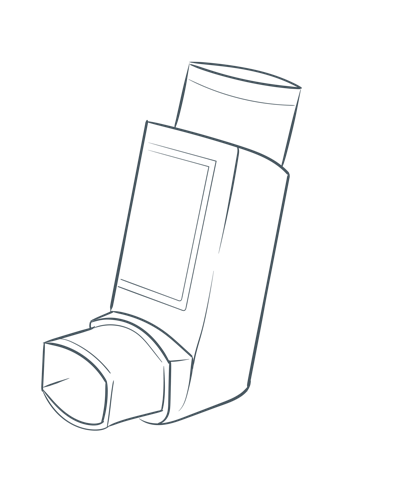
Our experts have compiled a list of selected not-for-profit organizations that provide fantastic information regarding asthma should you require it:
Asthma and Allergy Foundation of America
The National Health Service, UK
The Norwegian Asthma and Allergy Association
Humidity and employers
This is further problematized for employers, who are said to have received increased reports of itchy, watery eyes, headaches, throat irritation, respiratory symptoms, increased heart rate, negative mood, SBS symptoms, and fatigue from employees4. This was associated with unfavorable heat, humidity, and ventilation conditions. Not only is sitting in a stuffy, hot or worse humid workplace frustrating, it can also have negative effects on your health. So much so, that there is an increase in common workplace irritations. Moreover, the research found that “Increased water damage and mold have been found to negatively impact workplace productivity, job performance, quality of life, absenteeism, and classroom learning for office workers, teachers, and schoolchildren”5. Therefore the impact is not only for adult office workers, but could potentially have widespread effects of various age groups and areas.
Humidity levels chart
Please note, humidity is best considered in relation to temperature. For example, if you have 50% humidity as well as below freezing temperatures outside, you would naturally heat the air up indoors to keep warm. Because of this, condensation can form and you would have a heightened risk of mold formation
|
HUMIDITY LEVEL |
WHAT HUMIDITY LEVELS MEAN? |
WHAT COULD BE DONE TO IMPROVE? |
|
≥70% |
Poor high humidity levels. |
Try making changes such as:
|
|
≥60% and <70% |
Fair humidity levels |
Keep monitoring |
|
≥30% and <60% |
Good humidity levels |
Maintain your healthy levels |
|
≥25% and <30% |
Fair humidity levels, |
Keep monitoring |
|
<25%
|
Poor low humidity levels
|
|
Humidity is best considered in relation to temperature. For example, if you have 50% humidity as well as below freezing temperatures outside, you would naturally heat the air up indoors to keep warm. Because of this, condensation can form and you would have a heightened risk of mold formation. By monitoring humidity, you can ensure that you achieve the right humidity levels for your home inclusive of common humidity fluctuations and extraneous variables.
Quick humidity solutions
Good humidity levels are between 30-60%. Quick fixes like those we have listed below can often help manage your humidity levels. However you must first be sure that there is not a larger underlying issue such as pipe leaks, or subpar insulation in key areas. Successful ventilation inside of your home will help create a relatively constant humidity level that adheres to recommendations, you just need to monitor the levels to make sure.
Easy tips to help improve low indoor humidity levels in your home:
Simple fixes around the home can help to improve  humidity levels that are below the recommended 30%.
humidity levels that are below the recommended 30%.
- Washing clothes
When washing your clothes, air dry them inside the house on a clothes rack instead of a tumble dryer or washing line outside. The moisture in the clothes will release into your home. - Taking a bath
If you take a bath, leave the water in the tub until it cools. Some of the water will evaporate. Naturally, if you have small children around, this may not be the best option. - Showering
When showering, leave the door open to allow the moisture in the air to pass through the house. - Humidifier
As low humidity is very common in some areas, especially those with colder climates, humidifiers are now used in many people's homes. They are a mechanical device that adds moisture to the air.
Easy tips to improve high humidity levels in your home:
High humidity, above 60%, should be improved in order to have a healthy home. There are also simple and easy adjustments you can make around your home to improve this:
- Bathroom fan
Installing a bathroom fan can help to improve air circulation in the bathroom where warm, damp air accumulates. - Rangehood
A range hood is a mechanical fan situated above the oven, stove or cooktop in the kitchen. It helps to extract steam, heat, cooking fumes and odors from the air. - Washing line
Drying clothes on a line dryer out of doors will help combat the amount of moisture you are bringing into your home. - Air conditioning
A very easy solution, but not always the most cost-effective. - Replacing air conditioning filters
Replacing existing air conditioning filters will help to ensure fresh air is being circulated. - Opening windows
Good ventilation is key in your home for a multitude of reasons. A little more challenging in the colder months maybe, but simply opening a window allows fresh air to come into your home and improve air circulation. - Dehumidifier
In areas where you are really struggling, a dehumidifier could be the best solution.
Humidity is one component of a wider consideration that makes up the quality of your indoor air. As society spends more and more time indoors, the importance of the air you breathe in is rising. You can measure your humidity levels. More often or not people do not measure and only realize it is high once mold has already formed. Similarly, with radon gas, people are often not inclined to measure for it until they are made aware of being in a high-risk area or selling their home requires it. The Airthings Wave Plus can continuously test for relative humidity levels in your home. Meanwhile, it additionally measures for radon and temperature, all of which impact your indoor air quality.

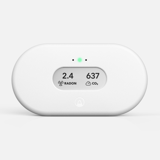
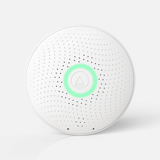

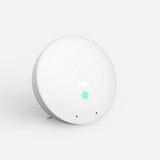
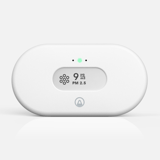
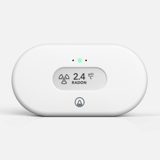
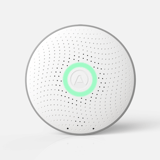
%20(1)%20(1)%20(1).webp?width=160&height=160&name=corentium_home_us_-_hero_image_-_front%20(1)%20(1)%20(1)%20(1).webp)




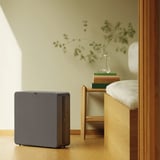


.webp)


 Back to top
Back to top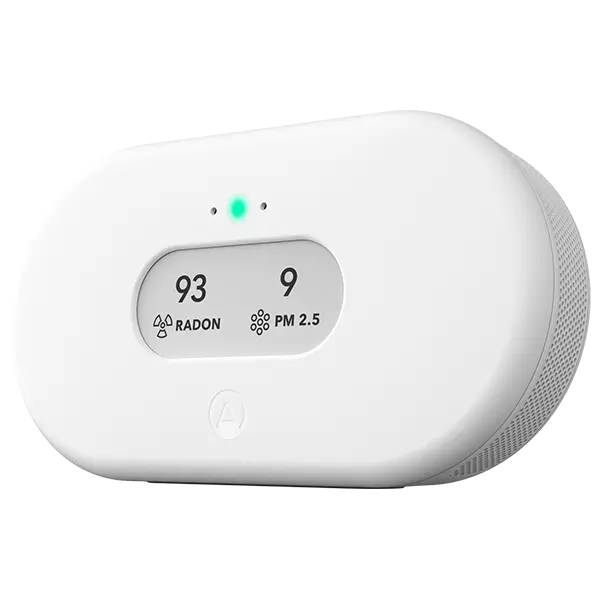

%20(1).webp)
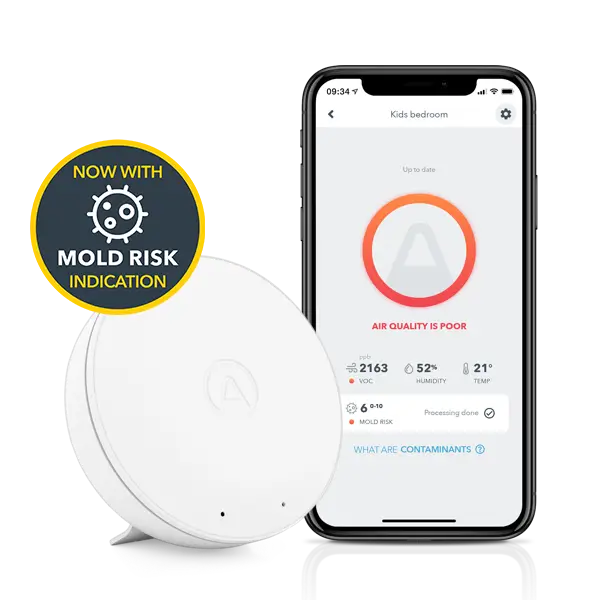
%20(1).webp)
